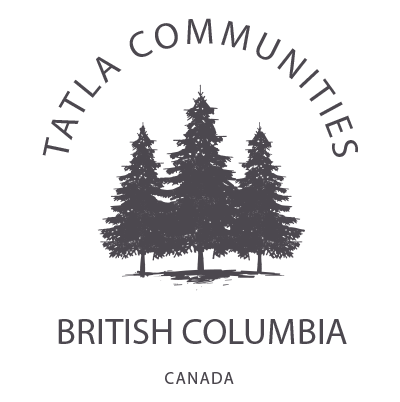Living on the edge of vast wilderness creates an interface between our human community and the rich forest life at our doorstep. A wide range of animals, from grizzly bears to hummingbirds, follow the natural corridor between the dry Chilcotin Plateau and British Columbia's wet coastal region. It is our intention to protect these intact ecological communities and the processes that sustain them.
TATLAYOKO LAKE BIRD OBSERVATORY
The Tatlayoko Lake Bird Observatory was established by the Nature Conservancy of Canada (NCC) in 2006 to monitor migratory bird populations in the valley.
BIRD BANDING PROGRAM
Researchers at the observatory have banded more than 15,000 birds and catalogued 187 species in the valley since it opened in 2006.
Grizzly Bear Research
an interview with cedar mueller
Cedar grew up in the Tatlayoko Valley and went on to become a wildlife biologist. She completed a Master’s degree studying grizzly bears in the Canadian Rockies. Here, we speak with Cedar about her grizzly bear research in the Tatlayoko Valley and upper Chilko River area.
What makes this region a unique habitat for grizzly bear populations?
The dry Chilcotin Plateau is connected to the wet coast of BC by habitat rich, low elevation valleys that transect the Coast Range. These valleys – the western and eastern branches of the Homathko and the Klinaklini, for example – provide interior grizzly bears with valuable spring habitat and potential access to the coast. The area is also home to one of the largest salmon runs in the province, which occurs along the upper Chilko River each fall. Few rivers in the world compare with the upper Chilko River as a source of salmon for grizzly bears. Research has shown that the Chilko salmon run attracts bears from an area with a radius of over 115 km (an area of over 41,000 square km) which is over 4 times the size of Banff, Yoho and Kootenay National Parks combined, and over 4.5 times the size of Yellowstone National Park.
please describe the general movement of grizzly bears through the area.
Continued research is needed to fully understand the movement of grizzly bears through the area. However, we do know that they seem to congregate in the lower elevation, early green-up valleys in the spring, move to higher elevation habitats in the summer, and head to the Chilko River for salmon in the fall.
What are the challenges facing our local grizzly bears?
As wild as the West/Central Chilcotin region is, it is not without threats for bears. Declines in salmon populations both on the coast and in the Fraser-Chilko may have significant impacts on bear populations in the region. Like everywhere else, humans are steadily infiltrating the area. Settlement, logging, mining, backcountry cattle range use, and recreation are all gradually altering the landscape and compromising this unique wilderness.
Global warming is also a threat to the area with its warming waters and changes in run-off for salmon populations in the Chilko River. Changing habitats such as wide-scale pine beetle devastation and corresponding changes in water runoff and extensive salvage logging operations – with accompanying road building and habitat alteration – are also a concern. Long-term protection and management of grizzly bears throughout the West/Central Chilcotin is unlikely to be successful without scientific information about the animals and their needs in a local context.
What can be done at a community level to support a healthy grizzly bear population?
Travel safely in bear country – make noise, travel in groups, carry bear spray, and understand what to do when you meet a bear.
Minimize human caused mortality – avoid leaving attractants around for bears to access (such as garbage, animal carcasses, oil products). Just like they say in the National Parks "a fed bear is a dead bear." As soon as a bear associates humans with food it becomes increasingly bold and eventually gets into trouble (hurts or scares someone or eats their pets) and has to be killed.
Respect important grizzly bear habitats – the salmon run on the Chilko River is a great example. Bears travel hundreds of kilometers to access this critical resource and they need to be able to eat while they are at the river. With increasing human use on the Chilko River during this time (bear viewers, fishermen, etc.) we need to ensure bears have the space they require.
















